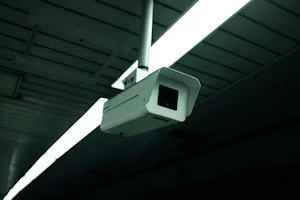Introduction
Great Etsy listings don’t rely on luck; they rely on clear photos that answer a buyer’s silent questions. What is it, how big is it, how does it feel, and will it fit my life? You can answer all four with a simple, repeatable setup you can assemble on a kitchen table. You don’t need a DSLR or an expensive light kit. A window, a sheet of poster board, a foam board reflector, and your phone will carry you surprisingly far. The secret is consistency: same light, same angle range, same file sizes, same order of images. Once you dial that in, shooting a new product takes minutes instead of hours, and your shop grid starts to look like a brand rather than a jumble.
Set your shooting station once so every session feels familiar. Place a table next to a bright window with indirect light. Tape a sheet of white poster board to the wall and curve it onto the table so there’s no horizon line. Prop a second board opposite the window to bounce light back into shadows. Turn off overhead bulbs so color stays neutral. Clean the surface and your phone lens; dust shows up more than you think.
Frame your hero shot first because it sets the tone for the listing. The hero should be clean, centered, and cropped generously so Etsy’s square thumbnails don’t amputate edges. If your product is small, come closer rather than zooming; phone zoom often lowers quality. Take a straight‑on version and a 45‑degree angle version and compare how the material reads. Shiny ceramics, glossy labels, and metallic finishes need slight angle shifts to dodge glare; a small tilt of the product or reflector is usually enough.
Show scale early so buyers don’t guess. A second image with a human hand, a coin, a book, or a common household object next to your product makes size clear without a word. If you sell jewelry, a simple neck or wrist model shot, even on a neutral mannequin, anchors expectations. If you sell wall art, show it above a couch or desk; even a mockup can help, but a real photo reads more trustworthy.
Tell a micro‑story with lifestyle photos, but keep styling minimal. Texture and context help buyers imagine how they’ll use your product, yet props can crowd the subject. Choose two or three elements that match your brand’s mood. A linen napkin for kitchen goods, a plant for planters, a spool of thread near textiles. If your product is vibrant, keep props neutral so colors don’t fight. If your product is neutral, use props to add warmth and scale.
Capture detail shots that answer tactile questions. Buyers want to see seams, clasps, glazes, grain, and the inside of containers. Hold your phone steady and tap to focus; if your camera has a macro mode, use it sparingly and step back if edges distort. Shoot variations, too: if you offer three glazes or two sizes, photograph each clearly on the same background. Consistent lighting across variations helps customers compare at a glance.
Keep angles simple and repeatable. A reliable sequence looks like this: hero straight‑on, hero 45‑degree, scale, lifestyle, detail, back/underside, packaging, and optional in‑use shot. The order matters because it mirrors how a buyer thinks, from “what is it” to “how will it arrive.” Once you establish your sequence, write it on a sticky note and tape it to your reflector so nothing gets missed.
Mind color accuracy because returns often stem from color surprise. Before a shoot, set white balance by tapping on a neutral area and nudging exposure slightly up, not to the point of blowing out highlights. After shooting, do a quick pass in your phone’s editor: straighten, crop square, tweak exposure and contrast modestly, and correct color only if the photo looks obviously warm or cool. Avoid heavy filters; they change color truth.
Prepare files to load fast and look crisp. Etsy’s thumbnails are square, but listing images can be wider; exporting squares for the first few slots keeps the grid neat. Aim for 2,000–2,500 pixels on the short side and keep file sizes manageable so mobile shoppers aren’t stuck waiting. Rename files with keywords that match the listing title, which can help organization and, in some cases, search context.
Use the full image quota intelligently. If Etsy allows ten images, use most of them, but don’t pad with duplicates. Extra angles of the same view waste attention. Instead, allocate one slot to care instructions or a materials card styled like your brand. Allocate one to a simple size guide graphic you make once and reuse for similar items. Allocate one to a packaging photo so buyers visualize unboxing and gifting.
Photograph packaging and shipping truthfully. A kraft box with tissue, a branded sticker, or a recycled wrap tells a story that supports gift purchases. Include a shot that shows how fragile items are secured. This reduces pre‑purchase anxiety and post‑purchase complaints.
Batch your shooting for sanity. Shoot all mugs on one day, all textiles on another. Group by material so your exposure and angles change less. Keep a packing checklist nearby and photograph that, too, if you think buyers will appreciate transparency into your process. Consistency in process translates into consistency in visuals.
Invite feedback and update images that underperform. Watch which listings convert from views to orders. If a product gets traffic but few purchases, revisit the first three images. Replace a lifestyle image that looks cluttered with a cleaner one, swap scale photos if buyers still ask about size, and A/B test hero angles over a week. One better photo often beats any copy tweak.
End with a tiny maintenance ritual. After each session, wipe props and boards, recharge your phone, and move the best images into a labeled folder with the product name and date. Future you will thank you when restocks are fast and painless.
-
Quick setup you can copy: window light, white sweep, foam board reflector, overheads off, lens cleaned, hero first, scale second, lifestyle third, details fourth, consistent edits, export square, upload in a buyer‑friendly order, monitor conversion, and improve the weakest image first.

